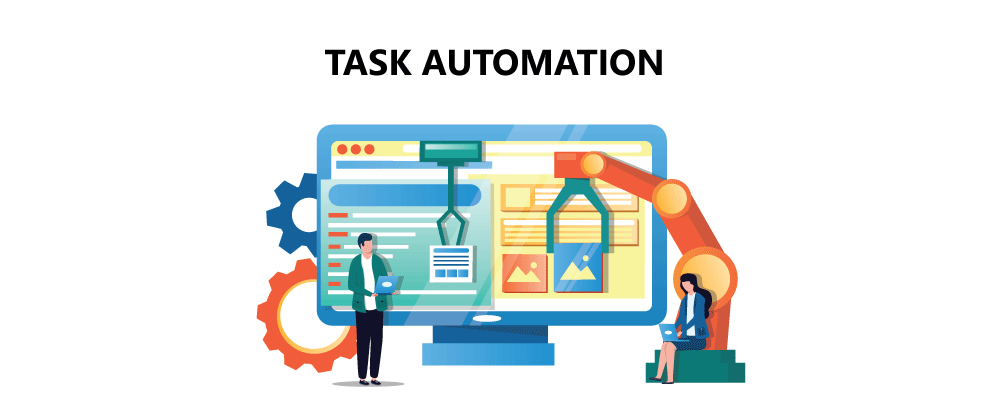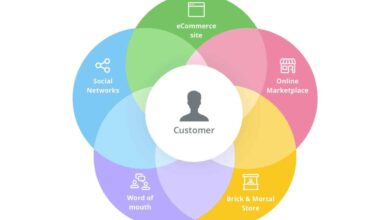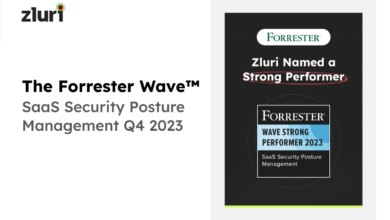
How Does Marketing Automation Help Business Growth?
How does marketing automation help business growth? That’s the million-dollar question many businesses are asking, and the answer is surprisingly multifaceted. It’s not just about saving time (though it does that brilliantly!), it’s about transforming your entire approach to marketing, allowing you to connect with customers on a deeper, more personal level, and ultimately, boosting your bottom line.
Get ready to discover how automation can revolutionize your business!
This post dives deep into the world of marketing automation, exploring how it streamlines processes, personalizes customer experiences, and fuels growth. We’ll cover everything from increased efficiency and productivity to improved lead generation and cost reduction, showing you exactly how to leverage automation to achieve your business goals. Prepare for some seriously insightful strategies!
Increased Efficiency and Productivity

Marketing automation isn’t just a buzzword; it’s a game-changer for businesses looking to boost efficiency and productivity. By automating repetitive tasks and streamlining workflows, marketing automation frees up valuable employee time, allowing your team to focus on more strategic, high-impact initiatives that drive real growth. This ultimately translates to a significant return on investment (ROI) and a healthier bottom line.Marketing automation dramatically accelerates campaign execution and increases frequency.
Imagine the time saved by automating email sequences, social media posting, and lead nurturing. This allows marketers to launch more campaigns, test variations more rapidly, and refine strategies based on real-time data, leading to better results and a more agile marketing approach.
Automation’s Impact on Campaign Speed and Frequency
Automated marketing allows for significantly faster campaign deployment. Instead of manually crafting and sending emails one by one, or scheduling social media posts individually, automation tools handle these tasks efficiently and at scale. This means you can launch campaigns much faster, react to market changes more quickly, and A/B test different approaches with greater frequency. For example, a company could automate a welcome email series for new subscribers, ensuring a consistent brand message is delivered immediately, compared to a manual process that may take days or even weeks.
The increased frequency of campaigns, facilitated by automation, allows for more consistent engagement with the target audience, strengthening brand awareness and driving conversions. This rapid iteration also enables quicker optimization based on performance data, maximizing the effectiveness of marketing efforts.
Improved Team Collaboration and Communication
Effective teamwork is essential for marketing success. Marketing automation enhances collaboration by centralizing marketing activities and providing a single source of truth for all team members. Automated workflows and reporting dashboards ensure everyone is on the same page, eliminating confusion and reducing the risk of duplicated efforts. For instance, a shared marketing calendar, automatically updated with campaign schedules and deadlines, keeps the entire team informed and aligned.
This shared view of campaign progress and performance data facilitates faster decision-making and problem-solving. Real-time data dashboards provide immediate insights into campaign performance, allowing teams to quickly identify areas needing attention and adjust strategies accordingly. This transparency and accessibility significantly improve internal communication and coordination.
Comparison of Manual vs. Automated Marketing Processes
| Task | Manual Process | Automated Process | Efficiency Gain |
|---|---|---|---|
| Email Marketing | Manual email creation, individual sending, tracking responses individually. | Automated email sequences, personalized messaging, automated tracking and reporting. | Significant time savings; improved personalization and targeting. |
| Social Media Posting | Manual scheduling and posting on each platform. | Automated scheduling across multiple platforms, consistent branding. | Time saved; improved consistency and reach. |
| Lead Nurturing | Manual follow-up with leads, tracking progress individually. | Automated lead scoring, personalized nurturing sequences, automated follow-up. | Increased conversion rates; improved lead qualification and management. |
| Reporting & Analysis | Manual data collection and analysis from various sources. | Automated data aggregation and reporting dashboards, real-time insights. | Faster insights; data-driven decision-making. |
Enhanced Customer Engagement and Personalization: How Does Marketing Automation Help Business Growth

Marketing automation isn’t just about efficiency; it’s the key to unlocking truly personalized customer experiences. By automating repetitive tasks, you free up valuable time and resources to focus on crafting meaningful interactions that resonate with your audience on a deeper level. This leads to stronger relationships, increased loyalty, and ultimately, higher conversion rates. The power lies in its ability to understand individual customer behaviors and tailor communication accordingly.Automated systems analyze customer data – from website activity to purchase history – to identify patterns and preferences.
This allows businesses to deliver highly targeted messages at precisely the right moment, maximizing impact and minimizing wasted effort. Imagine sending a personalized email recommending a product based on a customer’s recent browsing history, or triggering a follow-up message after a cart abandonment. These seemingly small actions significantly improve the customer experience and boost sales.
Automated Email Sequences for Lead Nurturing and Conversion
Well-structured automated email sequences are incredibly effective at nurturing leads and guiding them through the sales funnel. For example, a welcome series could introduce new subscribers to your brand, highlighting key benefits and offering valuable resources. Following a purchase, automated emails can offer product recommendations, encourage repeat business, or gather feedback. These sequences provide consistent engagement without requiring manual intervention, leading to improved conversion rates.
A successful example is a series of emails sent after a free trial sign-up. The first email might welcome the user and offer a quick tutorial. Subsequent emails could highlight key features, address common questions, and ultimately encourage a paid subscription. The timing and content of each email are crucial, and A/B testing different approaches helps optimize performance.
Creating Segmented Audiences and Delivering Tailored Content
Marketing automation platforms excel at segmenting audiences based on various criteria, such as demographics, purchase history, website behavior, and engagement level. This allows businesses to deliver highly targeted content that resonates with specific customer groups. For instance, you might segment your audience into “high-value customers,” “new subscribers,” and “inactive users,” each receiving different types of communication. High-value customers might receive exclusive offers and personalized recommendations, while inactive users could be re-engaged with targeted promotions or helpful content.
This level of personalization fosters a sense of value and strengthens customer relationships.
Personalization Techniques Enabled by Marketing Automation
The ability to personalize marketing messages significantly enhances customer engagement. Here are some techniques made possible by marketing automation:
- Personalized Email Subject Lines: Using the recipient’s name or referencing their past interactions in the subject line increases open rates.
- Dynamic Content in Emails: Tailoring email content based on customer segmentation (e.g., showing different product recommendations based on past purchases).
- Personalized Website Experiences: Showing different content or offers based on the visitor’s browsing history or demographics.
- Targeted Advertising: Delivering ads based on customer behavior and interests across various platforms.
- Personalized Recommendations: Suggesting products or services based on individual preferences and past purchases.
- Behavioral Triggered Emails: Sending emails based on specific customer actions, such as cart abandonment or website inactivity.
Improved Lead Generation and Qualification
Marketing automation dramatically boosts lead generation and qualification, moving beyond simple contact gathering to a sophisticated system of identification, scoring, and nurturing. This allows businesses to focus their resources on the most promising prospects, significantly increasing sales conversion rates and overall ROI. Instead of casting a wide net and hoping for the best, automation allows for a targeted, efficient approach.Automated lead generation and qualification is far more than simply collecting email addresses.
It’s about strategically engaging potential customers at each stage of their buyer’s journey, personalizing their experience, and ultimately converting them into paying clients. This precision targeting minimizes wasted effort and maximizes the return on marketing investments.
Lead Scoring and Nurturing Tools
Several powerful tools are pivotal in automating lead scoring and nurturing. Marketing automation platforms typically integrate these functionalities. These platforms often incorporate features that analyze website activity, email engagement, and form submissions to assign numerical scores reflecting the lead’s likelihood of conversion. Higher scores indicate greater potential. Popular tools include HubSpot, Marketo, Pardot, and ActiveCampaign.
These platforms provide dashboards visualizing lead scores and offer capabilities to segment leads based on these scores, enabling personalized nurturing campaigns. For instance, a lead scoring system might assign points for downloading specific white papers, attending webinars, or visiting pricing pages on a company website. A high score might trigger a personalized sales follow-up, while a low score could initiate a more general nurturing campaign focused on building brand awareness.
Automated Lead Nurturing Improves Lead Conversion Rates
Automated lead nurturing significantly improves lead conversion rates by providing personalized, timely, and relevant content throughout the buyer’s journey. Instead of a one-size-fits-all approach, automated systems deliver tailored messages based on individual lead behavior and engagement. For example, a lead who downloads a case study on a specific product might receive follow-up emails with related content, such as product demos or testimonials.
This consistent engagement keeps the lead engaged and moves them further down the sales funnel. Studies consistently show that nurtured leads produce a significantly higher conversion rate than those who are not nurtured. A well-structured automated nurturing campaign can increase conversion rates by up to 50%, demonstrating the power of personalized engagement.
Identifying and Qualifying High-Potential Leads
Marketing automation helps identify and qualify high-potential leads by analyzing various data points to create a comprehensive profile of each prospect. This includes tracking website activity, email opens and clicks, form submissions, and social media interactions. By analyzing this data, the system can identify leads exhibiting behaviors indicative of a strong purchase intent. For instance, repeated visits to pricing pages or engagement with product demos suggests a higher likelihood of conversion.
This data-driven approach allows marketers to prioritize high-potential leads and allocate resources effectively, leading to a more efficient and productive sales process. It helps filter out unqualified leads, freeing up sales teams to focus on prospects with a greater chance of closing a deal.
Comparison of Lead Nurturing Strategies, How does marketing automation help business growth
Different lead nurturing strategies can be effectively implemented using marketing automation. A comparison might include email drip campaigns (a series of automated emails sent over a period of time), personalized website content based on lead behavior, and triggered email sequences based on specific actions (e.g., downloading a resource). The choice of strategy depends on factors such as the target audience, the complexity of the sales process, and the available resources.
A simple email drip campaign might suffice for a low-cost product with a short sales cycle, while a more sophisticated strategy might be needed for a complex, high-value product. Ultimately, the most effective strategy is one that is tailored to the specific needs of the business and its target market. A/B testing different approaches allows for continuous optimization and improvement.
Data-Driven Insights and Measurement
Marketing automation isn’t just about automating tasks; it’s about gathering invaluable data to understand what’s working and what’s not. By tracking key metrics and analyzing the resulting data, businesses can make informed decisions to optimize their marketing strategies and significantly boost their return on investment (ROI). This data-driven approach allows for continuous improvement and a more precise targeting of potential customers.Marketing automation platforms collect and analyze data from various touchpoints across the customer journey.
This includes website activity (page views, time spent on site, downloads), email engagement (open rates, click-through rates, unsubscribes), social media interactions, and lead generation forms. The platforms aggregate this data, providing a holistic view of customer behavior and campaign performance. This comprehensive data set allows marketers to identify trends, pinpoint areas for improvement, and ultimately, refine their strategies for maximum impact.
Performance Metrics Tracking and Optimization
The ability to track and analyze numerous performance metrics is a core strength of marketing automation. These metrics provide a clear picture of campaign effectiveness and offer opportunities for optimization. For example, marketers can monitor email open and click-through rates to gauge audience engagement and refine subject lines and email content. Similarly, website conversion rates can reveal the effectiveness of landing pages and calls to action.
By consistently analyzing these metrics, businesses can identify underperforming campaigns and allocate resources more efficiently. Furthermore, lead scoring, a key feature of automation platforms, allows businesses to prioritize high-potential leads, focusing their sales efforts on those most likely to convert.
Examples of Data-Driven Insights Improving Marketing ROI
Imagine a company launching a new product. Using marketing automation, they segment their audience based on demographics and purchasing history. They then run targeted email campaigns to each segment, tailoring the messaging to resonate with their specific interests. By analyzing the data from these campaigns, they discover that one segment responds significantly better to a particular type of offer.
This insight allows them to shift resources towards this high-performing segment, maximizing their ROI. Another example involves a business using A/B testing on their website landing pages through their automation platform. By testing different variations of headlines, images, and calls to action, they identify the combination that produces the highest conversion rate. This data-driven optimization directly improves lead generation and ultimately, sales.
Data Flow and Decision-Making
Imagine a visual representation: a central hub representing the marketing automation platform. Various streams of data flow into this hub from different sources: website analytics (represented by a flowing chart showing website traffic), email marketing (represented by email icons with open/click rate data), CRM (represented by contact icons linked to customer profiles), and social media (represented by social media logos with engagement metrics).
Marketing automation streamlines processes, boosting efficiency and freeing up time for strategic initiatives. This efficiency is amplified when you leverage tools built with modern development approaches, like those discussed in this insightful article on domino app dev the low code and pro code future. Ultimately, by automating repetitive tasks, businesses can focus on personalized customer engagement, leading to increased conversions and sustainable growth.
The hub processes this data, performing calculations and generating reports. These reports then flow out to different departments: marketing (for campaign optimization), sales (for lead prioritization), and product development (for product improvements based on customer feedback). This visual representation clearly shows how data is collected, processed, and used to inform strategic decisions across the business. The entire process is cyclical, with insights from data analysis informing future marketing strategies, which in turn generate more data for analysis, creating a continuous loop of improvement and optimization.
Cost Reduction and ROI Improvement

Marketing automation isn’t just about efficiency; it’s a powerful tool for slashing costs and boosting your return on investment (ROI). By automating repetitive tasks and optimizing campaigns, businesses can free up valuable resources and significantly improve their bottom line. This leads to a healthier financial picture and allows for reinvestment in other growth areas.Automating marketing processes streamlines workflows, reducing the time and effort spent on manual tasks.
This translates directly into cost savings. Consider the time spent on manually sending emails, updating spreadsheets, or tracking campaign performance. Automation tools handle these tasks efficiently and accurately, freeing up your marketing team to focus on higher-value activities like strategy development and creative content creation. Moreover, automation minimizes human error, reducing the costs associated with fixing mistakes and redoing work.
Automated Marketing Cost Savings
Automation minimizes wasted resources. For example, instead of sending generic email blasts to a large, unsegmented list, automated email marketing allows for targeted messaging based on customer behavior and preferences. This targeted approach improves open and click-through rates, resulting in higher conversion rates and reduced wasted ad spend. Similarly, automated social media posting schedules content strategically, maximizing reach and engagement without requiring constant manual intervention.
Increased Conversion Rates and Revenue
Higher conversion rates are a direct result of improved efficiency and personalization. Automated lead nurturing campaigns, for example, deliver targeted content to leads at each stage of the sales funnel. This personalized approach increases engagement and guides leads toward conversion, ultimately boosting revenue. Imagine a scenario where a lead downloads a whitepaper; automation can trigger a series of follow-up emails providing relevant resources and offers, guiding them further down the sales funnel.
This targeted approach significantly increases the likelihood of conversion compared to a single, generic email.
Calculating Marketing Automation ROI
Calculating the ROI of your marketing automation investment involves comparing the costs of implementation and maintenance against the increased revenue and cost savings generated. A simplified formula is:
ROI = (Return – Investment) / Investment – 100%
To calculate the “Return,” consider the increased revenue generated through higher conversion rates, reduced marketing costs (e.g., less time spent on manual tasks, lower wasted ad spend), and improved customer lifetime value. The “Investment” includes the cost of the automation software, implementation, training, and ongoing maintenance.
Manual vs. Automated Marketing Costs
The following table illustrates the cost differences between manual and automated marketing activities. These figures are illustrative and will vary depending on the specific business and chosen automation tools.
| Marketing Activity | Manual Cost (Estimated) | Automated Cost (Estimated) | Cost Savings (Estimated) |
|---|---|---|---|
| Email Marketing (1000 emails) | $500 (including labor and software) | $100 (software and minimal labor) | $400 |
| Social Media Posting (weekly) | $200 (employee time) | $50 (scheduling software) | $150 |
| Lead Nurturing (100 leads) | $300 (employee time, personalized emails) | $75 (automation software, email templates) | $225 |
| Campaign Reporting (monthly) | $150 (employee time, manual data entry) | $25 (automation software, automated reports) | $125 |
Scalability and Growth
Marketing automation isn’t just about streamlining existing processes; it’s a powerful engine for scaling your business and achieving significant growth. By automating repetitive tasks and providing data-driven insights, it frees up your team to focus on strategic initiatives that drive expansion and reach new customer segments. This ultimately translates to faster growth and a more sustainable business model.Automation empowers businesses to handle significantly increased workloads without a proportional increase in manpower.
Imagine the scenario: your email marketing campaign is wildly successful, generating a surge in leads. Without automation, your team would be swamped, struggling to nurture each lead individually. With automation, the system automatically segments leads, triggers personalized follow-up emails, and scores them based on their engagement, ensuring that your team’s time is spent on the most promising prospects.
This efficient lead management system is the cornerstone of scalable growth.
Reaching Wider Audiences and Expanding into New Markets
Marketing automation platforms offer sophisticated tools for targeting specific demographics, interests, and behaviors across multiple channels. This precision targeting allows businesses to reach wider audiences efficiently, avoiding wasted ad spend on irrelevant segments. Furthermore, these platforms often integrate with translation services and localized content creation tools, making it significantly easier to expand into new geographical markets. The ability to personalize messaging and tailor it to the nuances of different cultures is crucial for success in international markets, and automation streamlines this complex process.
Automation’s Role in Supporting Business Growth Strategies
Marketing automation isn’t a standalone solution; it’s an integral part of a comprehensive growth strategy. It allows businesses to implement sophisticated strategies like account-based marketing (ABM), where marketing efforts are hyper-focused on a select group of high-value accounts. Automation helps to nurture these accounts with personalized content, track their engagement, and alert the sales team to opportune moments for engagement.
Similarly, automation facilitates the implementation of multi-channel marketing campaigns, ensuring consistent messaging and a seamless customer experience across email, social media, and other platforms. This coordinated approach is key to driving brand awareness, generating leads, and ultimately boosting revenue.
Examples of Automation-Driven Growth
Consider a small SaaS company that uses marketing automation to nurture leads through a series of automated email sequences. These sequences provide valuable information, answer common questions, and ultimately guide prospects towards a purchase. By automating this process, the company frees up its sales team to focus on closing deals, leading to a significant increase in conversion rates and revenue growth.
Another example is a large e-commerce company using automated retargeting campaigns to re-engage website visitors who abandoned their shopping carts. These automated campaigns remind customers of their abandoned items, offering incentives to complete their purchase. This results in a higher conversion rate and increased sales, demonstrating how automation can significantly impact the bottom line. These examples highlight how businesses of different sizes can leverage automation to achieve rapid growth and expansion.
End of Discussion
So, there you have it – a whirlwind tour of how marketing automation can supercharge your business growth. From automating tedious tasks to delivering hyper-personalized experiences and gaining invaluable data-driven insights, the benefits are undeniable. Don’t just take my word for it; start exploring automation solutions today and witness the transformative power firsthand. Your future self (and your bottom line) will thank you!
Questions and Answers
What’s the best marketing automation platform for small businesses?
There’s no single “best” platform; the ideal choice depends on your specific needs and budget. Research options like HubSpot, Mailchimp, ActiveCampaign, and others, comparing features and pricing to find the best fit.
How much does marketing automation software cost?
Pricing varies widely depending on the platform and features. Expect to find options ranging from free plans with limited functionality to enterprise-level solutions with hefty price tags. Look for free trials to test before committing.
How long does it take to see results from marketing automation?
Results aren’t instant, but you should start seeing improvements within a few months, provided your strategy is well-planned and implemented correctly. Consistent monitoring and optimization are key.
Do I need technical expertise to use marketing automation software?
Most platforms are designed to be user-friendly, requiring minimal technical skills. However, some advanced features may require more expertise. Many platforms offer excellent support and training resources.





